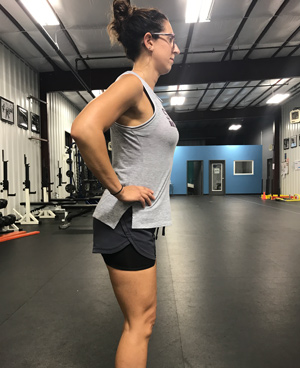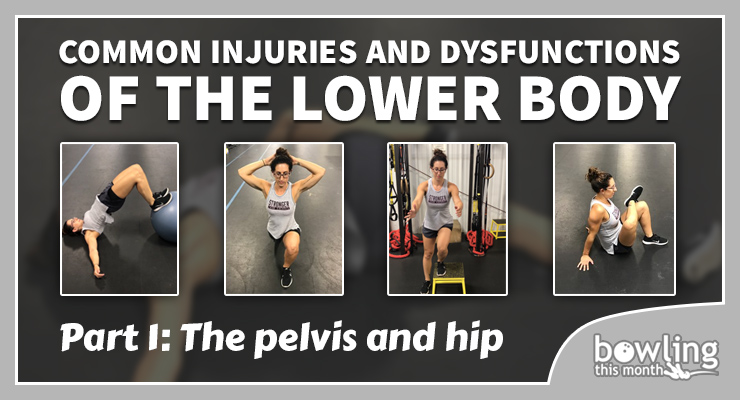Article Contents
- 1. Sacroiliac and iliofemoral joints
- 2. Postural deviations
- 2.1. Anterior tilt
- 2.2. Posterior tilt
- 2.3. Lateral tilt
- 3. Piriformis syndrome
- 4. SI joint dysfunction
- 5. Trochanteric bursitis
- 6. Up next
Note: This article is only available to Bowling This Month subscribers.
If you’ve been bowling for a while, then I’m sure you know by now that lower back issues are a common problem among avid bowlers. The imbalances created with the lower body during the repetitive movements in our approaches can wreak havoc on the pelvis and hip, creating pain in the lumbar region stemming from tight muscles, compressive forces on the intervertebral discs, scoliosis, and excessive pelvic tilting.
In this article, I will break down some common dysfunctions of the pelvis and hip. Also, I’ll provide recommendations for preventing chronic problems and relieving pain in the lumbar region through stretches and movement. But first, let’s start with a quick description of the anatomy of the pelvis and hip.
Sacroiliac and iliofemoral joints
The pelvis itself is comprised of three bones: the ilium, the ischium, and the pubis. The sacrum and coccyx of the spinal column stem down into the pelvic girdle. The sacroiliac joint (commonly referred to as the “SI joint”) connects the sacrum to the ilium of the pelvis. The interesting thing about the SI joint is that no muscles directly connect these two bones, as is usually the case with other joints. Typically, pain in the lumbar (lower back) region means that the SI joint must be assessed due to its functional relationship with the lumbar spine. The SI joint is responsible for two movements: nutation and counternutation, which are otherwise known as pelvic tilt.
The iliofemoral joint is the anatomical name for the hip. It is responsible for six degrees of movement including flexion, extension, abduction, adduction, medial rotation, and lateral rotation.
If you have pain with performing active range of motion through these joints, it can be caused from ligament damage, muscle contractures, nerve compression, fibrous cysts, or arthritis. Pain with passive range of motion through these joints can mean pathologies from joint capsules, ligaments, nerves, bursae, or cartilage. Pain with resisted range of motion is usually a sign of damage to the actual muscle or contractile tissue.
Postural deviations
Some of the dysfunctions of the hip can be caused by postural deviations. Let’s look at the different types of postural deviations in detail below.
Anterior tilt
If you think of the pelvic girdle as a big bowl of water, anterior tilting would cause the bowl to tip and spill water forward. An example of anterior tilting is shown below:

Anterior tilt
In this position, the hip flexors are shortened, along with the quadratus lumborum (QL) muscles and erector spinae muscles (spinal extensors). Therefore, anterior tilt is usually caused by hypertonicity of these muscles while their opposing musculature is weak and underutilized. The opposing musculature ...
Already a premium member? Click here to log in.


